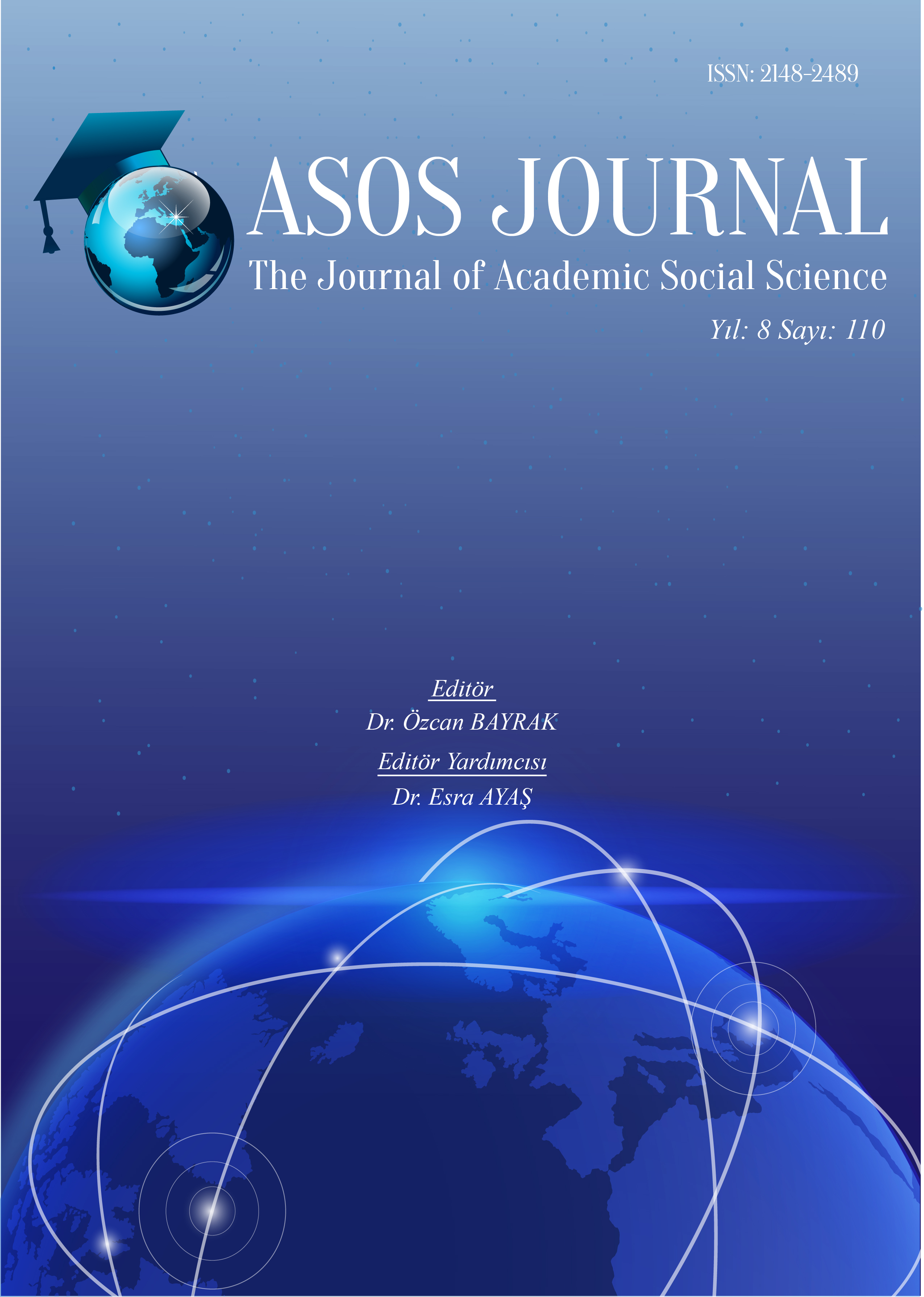Author :
Abstract
The main purpose of this study is to determine the educational senses of personal stress factors within the scope of distance education process in terms of teachers and principals. Within this scope, the survey form which is prepared as research oriented is applied to 601 individual within 302 schools that provide in four large districts in Izmir province between 15.06.2020 and 15.08.2020.Following the research for managing personal stress, main attributions, self-efficacy and personality factors are determined to be significant at advanced level. Besides, in terms of stress managing for distance education in pandemia process, before pandemia, mid education, end of education, exam periods and after pandemia processes are considered important. During this process, quality, motivation and internal stakeholder satisfaction are determined to have a great importance in the context of stress
Keywords
Abstract
The main purpose of this study is to determine the educational senses of personal stress factors within the scope of distance education process in terms of teachers and principals. Within this scope, the survey form which is prepared as research oriented is applied to 601 individual within 302 schools that provide in four large districts in Izmir province between 15.06.2020 and 15.08.2020.Following the research for managing personal stress, main attributions, self-efficacy and personality factors are determined to be significant at advanced level. Besides, in terms of stress managing for distance education in pandemia process, before pandemia, mid education, end of education, exam periods and after pandemia processes are considered important. During this process, quality, motivation and internal stakeholder satisfaction are determined to have a great importance in the context of stress
Keywords
- Baruch, Y.- Nicholson, N. (1997). Home, Sweet Work: Requirements for Effective Home Working. J. Gen. Manag. 23, 15–30, doi:10.1177/030630709702300202
- Buheji, M (2020) Visualising Resilient Communities, Authorhouse Publishing, UK.
- Buheji, M., Jahrami, H., Dhahi, A. (2020). Minimising Stress Exposure During Pandemics Similar to COVID-19, International Journal of Psychology and BehavioralSciences , 10(1),pp. 9-16
- Cass, Monica H., Siu, Oi Ling, Faragher, E. Brian, Cooper, Cary L. (2003), “A Meta-Analysis of The Relationship Between Job Satisfaction and Employee Health in Hong Kong”, Stress and Health 19: 1-26.
- Cohen, S.,‐Deverts, D. (2012). Who's Stressed? Distributions of Psychological Stress in the United States in Probability Samples from 1983, 2006, and 20091. Journal of Applied Social Psychology, 42: 1320-1334
- Eraso, B.A.-Garces,A.E.(2020). Teleworking in the Context of the Covid-19 Crisis. https://www.researchgate.net/publication
- Hurley, K (2019) Stress vs Anxiety: How to Tell the Difference, March 19. https://www.psycom.net
- InnovAiT. (2014) The stress epidemic. Reprints and permissions: sagepub.co.uk/ journalsPermissions.nav. 8(1), 36–40.
- Lee, S.J.-Ward, K.P. (2020). Stress and Parenting During the Corona Virus Pandemic. Parenting in Context Research Lab University of Michigan.https://www.wbur.org.
- Lee, A; Wong, J; McAlonan, G; Cheung, V; Cheung, C; Sham, P; Chu, C; Wong, P; Tsang, K; Chua, S. (2007). Stress and Psychological Distress Among SARS Survivors 1 Year After the Outbreak, The Canadian Journal of Psychiatry, Vol 52, No 4, April.
- Limcaoco, R.S.G. etc. (2020). Anxiety, worry and perceived stress in the world due to the COVID-19 pandemic, March 2020. Preliminary results.doi: https://doi.org/10.1101/2020.04.03.20043992
- Lockwood,G., Henderson, C., Stansfeld, S. (2017).An Assessment of Employer Liability for Workplace Stress, International Journal of Law and Management, 59 (2), pp.202-216.
- Martín, P. (2018).Teletrabajo y comercioelectrónico. In Ministerio De Educación; Cultura y Deporte: Madrid, Spain.
- MEB.(2020). UzaktanEğitimGenelge.www.meb.gov.tr.
- Mohalik, S.; Westerlund, M.; Rajala, R.; Timonen, H. (2019).Increasing the adoption of teleworking in the public sector.In Proceedings of the ISPIM Conference Proceedings, Ottawa, ON, Canada, 7–10 April 2019. Available online: https://search.proquest.com.
- Nahavandi, AfsanehveMalekzadeh, Ali R. (1999).OrganizasyonelBehavior, Ptentice-Hall Inc., USA.
- Purcalla, M.A.(2003). Belzunegui-Eraso, A. Marcos jurídicos y experienciasprácticas de teletrabajo.Aranzadi Soc. 5,pp. 1333–1376.
- SAMHSA. (2014). Coping With Stress During Infectious Disease Outbreaks. Toll-Free: 1-877- SAMHSA-7 (1-877-726-4727) | Info@samhsa.hhs.gov https://store.samhsa.gov
- Sinduja, K. veSuganya, S. (2017). A Study on Stress Management of Employes With Special Reference to Sterling Holidays, Oots, International Journal of Research in Commerce and Management, 8(7), pp.130-135.
- Tavares, A.I.(2020). Telework and Health Effects Review, and a Research Framework Proposal; Munich Personal RePEc Archive Paper, University Library of Munich: Munich, Germany, 2015. Available online: https://mpra.ub.unimuenchen.de/71648/1/MPRA_paper_71648.pdf
- T.C. ResmiGazete (23.03.2020). www.resmigazete.gov.tr. The CBT Resource.(2020). Managing stress and worry during the COVID-19 outbreak. www.vinegarandbrownpaper.co.uk
- United Nations (2020). Policy Brief: Education During Covid-19 and Beyond. https://jaago.com.
- Wainwrigt, D.-Calnan, M. (2020). Rethinking the work stress 'epidemic'. https://academic.oup.com.





